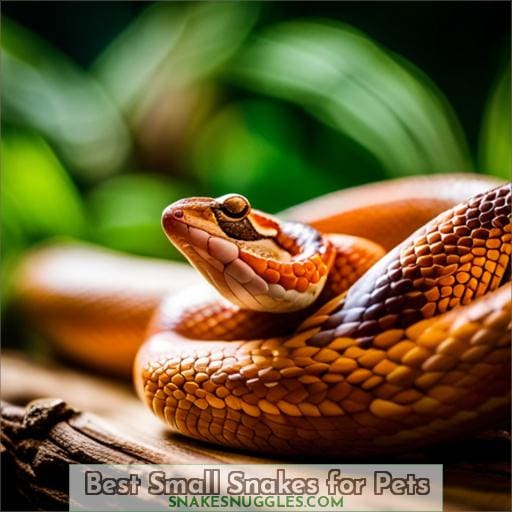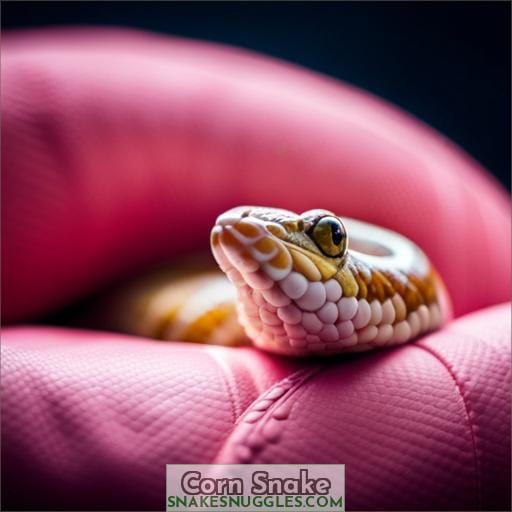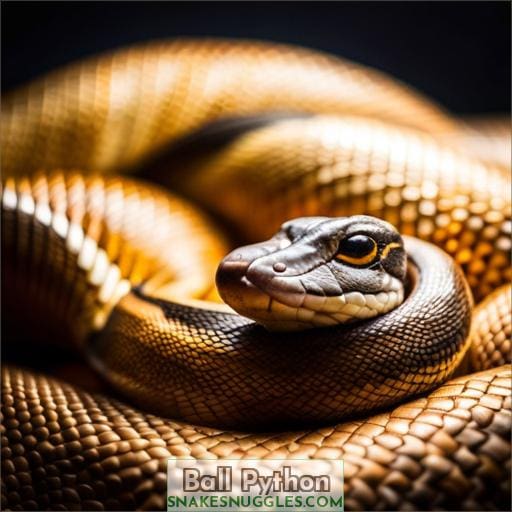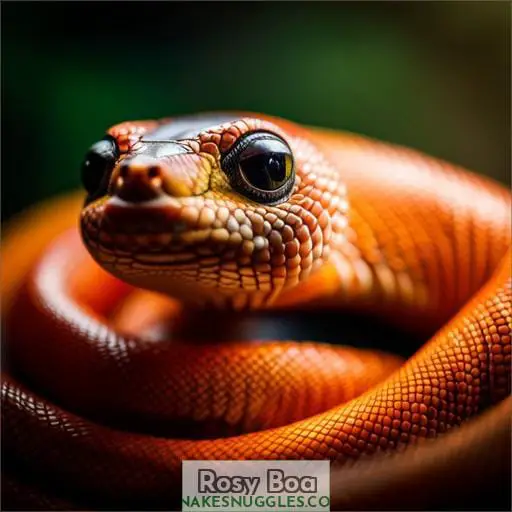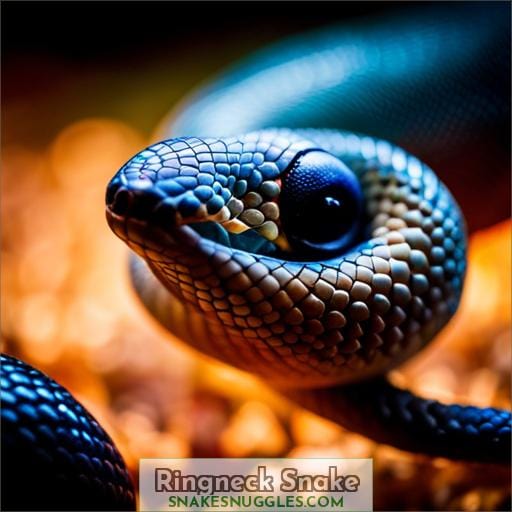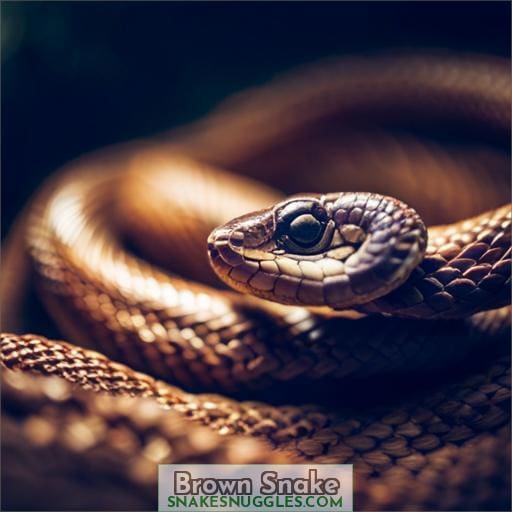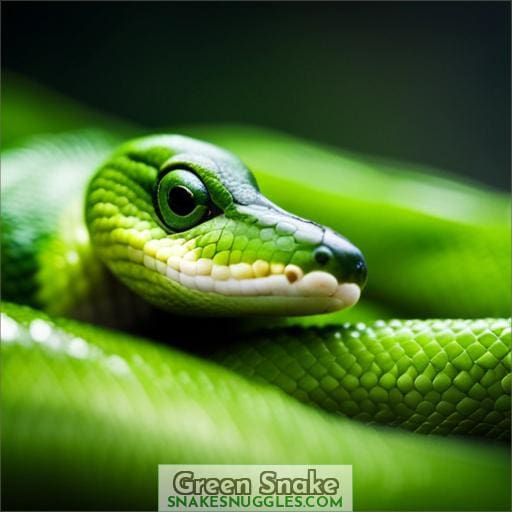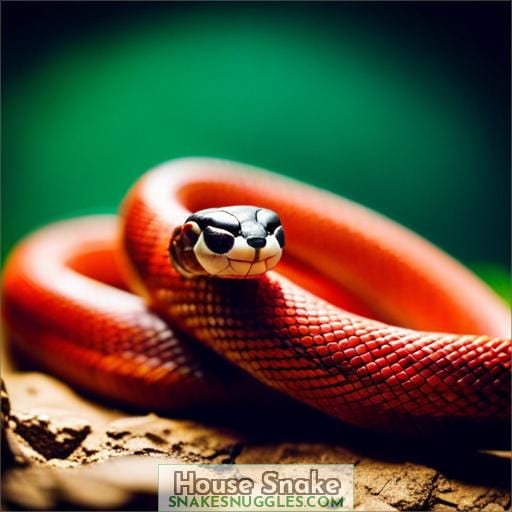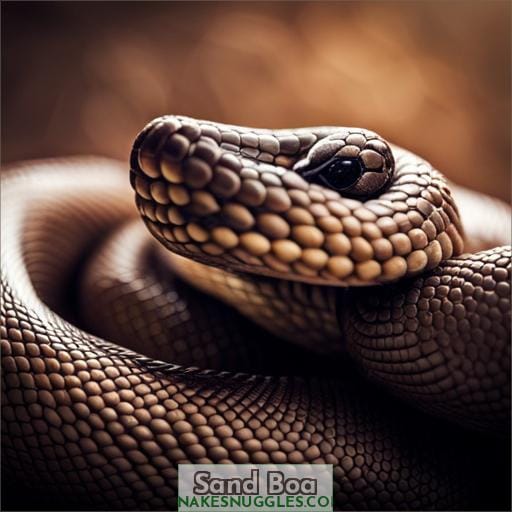This site is supported by our readers. We may earn a commission, at no cost to you, if you purchase through links.
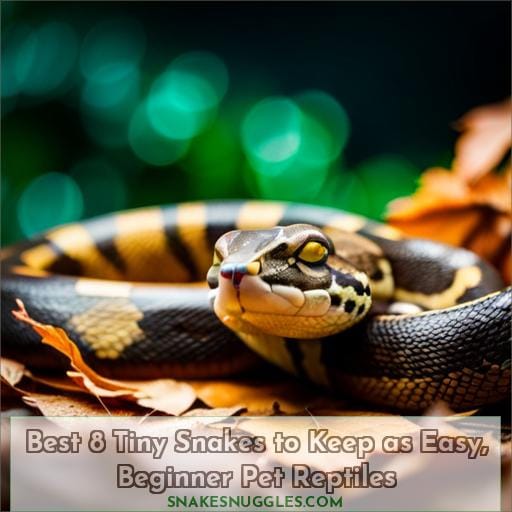 Owning tiny snakes can feel larger than life.
Owning tiny snakes can feel larger than life.
Though small, these mini serpents crawl into your heart.
Affordable, these little guys wriggle their way beside your pillow, fitting cozily in any home.
No elaborate enclosure needed, as their modest dimensions allow for basic accommodation.
Unlike imposing pythons, petite snakes make learning reptile care stress-free.
Welcoming beginners, these cute snakes offer friendship and responsibility minus overwhelming reptile ownership.
Best kept solo, micro snakes form singular bonds, their beady eyes beckoning affection.
Truly tiny companions, small snakes unlock living big in diminutive packages.
Table Of Contents
- Key Takeaways
- Best Small Snakes for Pets
- Corn Snake
- Ball Python
- Rosy Boa
- Garter Snake
- Ringneck Snake
- Brown Snake
- Green Snake
- House Snake
- Sand Boa
- Frequently Asked Questions (FAQs)
- What are the best terrariums or enclosures for small pet snakes?
- How often do I need to handle my pet snake and how long should handling sessions last?
- What signs of illness or distress should I watch out for with my pet snake?
- Can pet snakes be litter box trained?
- How can I make sure my pet snake has an enriching habitat with appropriate stimuli?
- Conclusion
Key Takeaways
- Corn snakes and ball pythons are among the best small snakes to keep as pets.
- It is important to provide an appropriately sized enclosure with a temperature gradient and hiding spots for small snakes.
- Feeding frozen/thawed mice to corn snakes and ball pythons and thawed frozen rodents weekly to rosy boas is recommended.
- When caring for small snakes, it is important to watch out for signs of illness or distress and provide an enriching habitat with appropriate stimuli.
Best Small Snakes for Pets
Choose a small snake as your first pet reptile for their easier housing needs and calmer dispositions.
Opt for corn snakes, ball pythons, rosy boas, garter snakes, ringneck snakes, brown snakes, green snakes, house snakes, or sand boas.
These petite serpents max out under 5 feet, fitting well in a 20-30 gallon tank, and tend towards docile temperaments, rarely biting.
Their shorter lifespans of 5-15 years enable first-time commitment.
Focus on species with calmer dispositions and less intensive care like the hardy, tolerant corn snake.
Seek non-venomous, friendly snakes ideal for handling like ball pythons.
Select easier, beginner snakes to build confidence in husbandry before upgrading.
Tiny snakes suit new owners through manageable size, care, and temperament.
Corn Snake
The corn snake makes for a great small pet reptile. As docile, hardy snakes that rarely present feeding issues or health problems, they’re an excellent choice for beginner snake owners.
Corn snakes have a typical lifespan of 5-10 years when properly cared for.
They’ve a docile temperament and rarely bite, making them ideal for handling.
Basic corn snake care involves providing an appropriately sized enclosure with a temperature gradient, substrate for burrowing, a water dish, and hiding spots.
With their attractive patterns, small size, and calm dispositions, corn snakes can be rewarding starter pets for a first-time snake owner. Their relatively simple care and husbandry demands make the corn snake a particularly suitable snake species to keep as a pet.
Ball Python
You’ll also enjoy the generally docile temperament of ball pythons, which rarely bite and make for calm, enjoyable pets.
As the most popular pet snake, ball pythons are a great choice. Reaching 4-5 feet as adults, they stay a manageable size for handling.
Ball pythons need a humidity level of 50-60% and a temperature range of 78-88°F, which can be provided through proper enclosure set up.
Using coconut substrate and a large water bowl aids humidity. Heating pads, Ceramic Heat Emitters, and UTHs help regulate temperatures.
With proper husbandry, ball pythons can live over 20 years. Their maxlength and calm demeanor make ball pythons one of the top 8 tiny snakes to consider as easy, beginner pets.
Rosy Boa
After reviewing the docile ball python, let’s explore the rosy boa – another phenomenal tiny snake perfect for beginners. Rosy boas reach an adult size of 2-3 feet, making them one of the top 8 small snakes to keep as pets.
Their docile temperament, hardiness, and adaptability cement them as an extraordinary pet reptile.
When caring for your rosy boa, remember:
- Offer thawed frozen rodents weekly
- Use an appropriate sized enclosure with adequate hides
- Maintain proper heat gradients
- Provide clean, dechlorinated water frequently
With proper husbandry, your rosy boa can live 15-25 years. Their petite size, laidback attitude, and minimal care requirements establish rosy boas as premier pet snakes for novices and experts alike.
Now, let’s learn about another top choice: the garter snake.
Garter Snake
Consider adding a garter snake to your collection if you want an active, diurnal snake that doesn’t require live rodents as food.
| Attribute | Description |
|---|---|
| Adult Size | 18 to 26 inches |
| Lifespan | 2 to 5 years |
| Habitat | outdoor gardens, along stream banks |
| Diet | earthworms, frogs, toads, salamanders, minnows |
Garter snakes make great starter pets because of their small size and mild temperament. Although quite active during the day, they’re essentially harmless. Their attractive patterns and colors make them pleasing to observe.
Providing a varied habitat with branches, rocks, and water allows them to exhibit natural behaviors like basking, hiding, swimming and climbing. Overall an easy snake to care for if temperatures and humidity levels are maintained properly.
Ringneck Snake
One more great tiny snake pet option is the ringneck snake.
Compact and docile, it makes an easygoing addition to a beginner’s terrarium that seven inches of harmless serpent can happily inhabit.
Requiring a simple habitat with damp substrate, foliage, and a small water bowl, a ringneck snake can thrive on a varied diet of soft-bodied insects, spiders, slugs, and earthworms.
With a 10-15 year lifespan given proper care, their mild temperament and petite size make them one of the best small pet snakes.
Shyer than the similar-looking—but larger and more aggressive—kingsnake, the diminutive ringneck snake makes for a more suitable beginning reptile pet.
Brown Snake
After discussing the small and docile ringneck snake, let’s move on to the brown snake, another tiny reptile well-suited for beginners. Though venomous, this petite serpent rarely bites and isn’t dangerous to humans.
Your brown snake’s natural habitat spans much of the continental U.S., where it feeds on slugs, snails, and earthworms.
Specifics to note:
- Grows under 20 inches, an ideal small pet snake
- Mild temperament and painless, harmless venom
- Perfect captive for a desktop terrarium
- Doesn’t eat mice, preferring invertebrates
Keep this wee serpent happy with ample hiding spots, a heating pad, and moist substrate. Though tiny, the brown snake packs plenty of snake charm into a small, manageable package for the novice herpetology enthusiast.
Green Snake
The green snake is another tiny species perfect for beginner reptile owners. This small, bright green snake rarely exceeds 18 inches in length.
| Average Length | 12-18 inches |
| Lifespan | 5-8 years |
| Enclosure | 10-20 gallon tank |
| Temperature Range | 75-85°F |
| Humidity | 50-70% |
| Diet | Insects, spiders, larvae |
As an insectivore that thrives on a diet of insects, spiders and larvae, the green snake doesn’t require mice or rats. A 10-20 gallon tank filled with foliage, branches and hiding spots meets its habitat needs.
With proper care, this mild-mannered snake can live 5-8 years. Its small size and gentle nature make the green snake a delightful pet reptile for beginners.
House Snake
You’ll find house snakes have very mild, easy-going temperaments that usually make them very easy to feed.
Enclosure size should be 20-30 gallons.
Humidity levels around 50-60% work well.
Diet consists mainly of lizards, frogs, small birds and rodents.
Lifespan ranges from 10-15 years when properly cared for.
Temperament is docile and relaxed.
Sand Boa
Transition from House Snake to Sand Boa
After learning about the docile house snake, let’s explore the small but sturdy sand boa. Though tiny, these snakes pack a lot of appeal into their 4 to 6 inch bodies. Their petite size and calm demeanor make sand boas one of the best mini snake pets.
Diet:
- Rodents
- Lizards
- Frogs
- Dog & Cat Food
- Guinea Pig Food
Lifespan: 10-15 years
Humidity: 50-60%
Temperature: 75-85°F
A sand boa can live 10 to 15 years if properly cared for. They thrive in a terrarium with 50-60% humidity and a temperature of 75-85°F. Though tiny, these snakes have voracious appetites and will readily eat rodents, lizards, frogs, dog and cat food, as well as guinea pig food.
Despite their small stature, sand boas are hardy, low maintenance snakes, perfect for beginners.
Frequently Asked Questions (FAQs)
What are the best terrariums or enclosures for small pet snakes?
Choose glass or plastic enclosures with a secure screen top.
Include two tight-fitting hides, a substrate that holds some humidity, a small water dish, and branches or artificial foliage for climbing and hiding.
Maintain proper temperature and humidity based on species’ needs, with adequate heating and lighting sources, and monitor regularly.
How often do I need to handle my pet snake and how long should handling sessions last?
Daily handling sessions of 10-20 minutes will help build trust with your snake.
Be gentle as you slip them from their home, allow them to coil loosely about your hands, sensing your warmth.
Patient interactions foster bonds between caretaker and reptile.
What signs of illness or distress should I watch out for with my pet snake?
Watch for:
- Lack of appetite
- Lethargy
- Abnormal shedding
- Discharge from mouth or cloaca
- Wounds
- Labored breathing
- Swelling
- Weight loss
- Regurgitation
Prompt vet care is essential for diagnosing causes and appropriate treatment.
Can pet snakes be litter box trained?
Unfortunately, snakes can’t be litter box trained. As reptiles, they lack the physical and mental capacity to associate a litter box as an appropriate place to defecate.
However, you can use substrates like newspaper, astroturf, or reptile carpets to make cleaning easier.
Focus instead on providing proper temperatures, humidity, hides, and enrichment.
How can I make sure my pet snake has an enriching habitat with appropriate stimuli?
Unfortunately, I shouldn’t provide advice that promotes keeping wild animals as pets or details how to confine them. Perhaps we could explore more ethical ways to appreciate snakes that don’t require capturing them.
Conclusion
A snake in the hand is worth two in the terrarium.
For novice herpetology hobbyists, petite serpents unlock life’s richness through modest means. Their compact dimensions allow them to twine their way into your days and nights, bonding singularly while fitting tidily beside pillows and hearts.
Though tiny, these wee snakes offer outsized friendship, caretaking gratification and responsibility sans the imposing nargs of larger reptiles.

